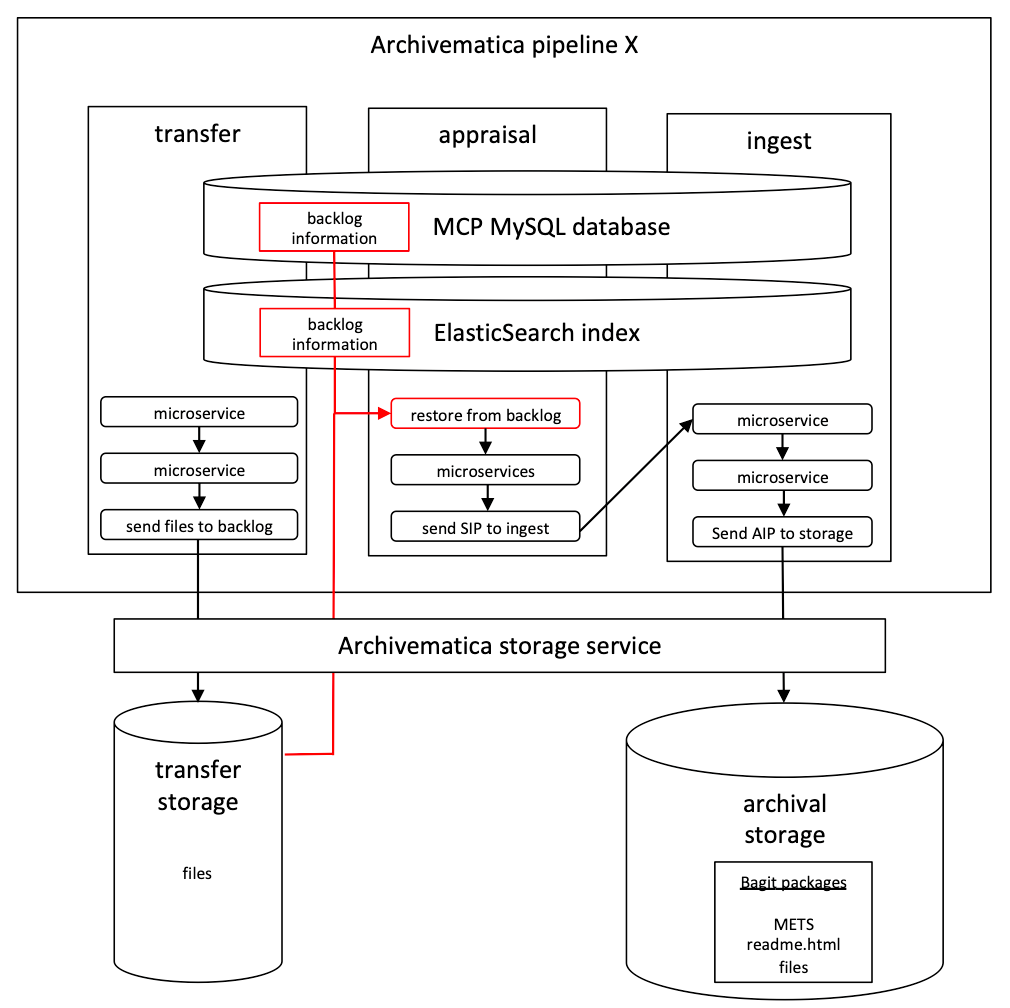The Simon Fraser University Archives is a long-time Archivematica user. They recognized that there is often a long-period between receiving digital materials from donors and an archivist creating a Submission Information Package (SIP) for long-term archival storage. SFU Archives wanted the ability to perform minimal digital preservation tasks, such as those provided by Archivematica’s Transfer functionality, and then return to the creation of SIPs from backlog at an undetermined future time, perhaps several years in the future.
This meant that transfer backlogs are used for long-term storage of content and that users should expect it to be as durable as Archival Information Package (AIP) storage for maintaining accurate metadata over pipeline upgrades, migrations or re-indexes. To enable this, the decision was made to package backlog transfers as BagIt packages, supported by a verbose METS file, as is already done for AIPs.
Chosen option: Option 2 was chosen because SFU Archives wanted the ability to create multiple SIPs from multiple transfers. In their use cases, one transfer does not automatically equal one SIP and one AIP. By sending transfers to backlog they are able to use the Appraisal tab functionality where users can create SIPs by combining files from different transfers in the Archivematica backlog.
However, this creates a new expectation, namely, that transfer backlogs can be used for long-term storage of content and that users should expect it to be as durable as AIP storage for maintaining accurate metadata over pipeline upgrades, migrations or re-indexes. However, prior to release 1.10, transfers stored using Archivematica’s backlog functionality could only be accessed by using the same pipeline that the transfer was created in. If the pipeline was accidently lost or decomissioned, you would be unable to reindex and repopulate the backlogged material in a new Archivematica pipeline. The reliance on maintaining this backlog information in the pipeline’s transactional database (MCPServer) and search index (Elasticsearch) is a significant preservation risk if the files are kept in backlog for an indefinitely long period of time, as is the case for SFU Archives and an increasing number of Archivematica users.

The decision was made to convert the materials in transfer backlogs to mirror Archivematica’s AIPs, namely to use the Bagit and METS standards to package and describe the transfer materials. As materials go through transfer processing, event and object information is written to the transfer METS file wherever feasible. Other relevant information is captured in a logs subdirectory in an IETF-compliant Bagit package. Functionality was then added in Archivematica release 1.10 to rebuild backlogs from these self-describing packages in the event of a lost or destroyed pipeline.

Archivematica users that rely on transfer backlog for long-term storage of digital materials can now be assured that they can rebuild their backlogs from the transfer Bagit packages that Archivematica creates as of release 1.10. This significantly reduces the risk of loss of materials during the transfer backlog phase.
Some major changes were introduced to the Archivematica codebase to enable it to restore from backlog using transfer Bagit packages. Previously, the information used to accomplish this was maintained primarily in the MCPServer database and ElasticSearch index. There is a risk that not all previous functionality to restore from backlog is fully enabled and that some regressions may have been introduced as a result of this architectural change.